Manufacturer's Boards Arrive
While the SMD prototype we had made on the Othermill verified that the circuit we had designed worked, we were ready for the next step in the process: sending off the design to a professional manufacturer to receive a more reliable, high quality PCB. Today, the boards came and the difference is huge.
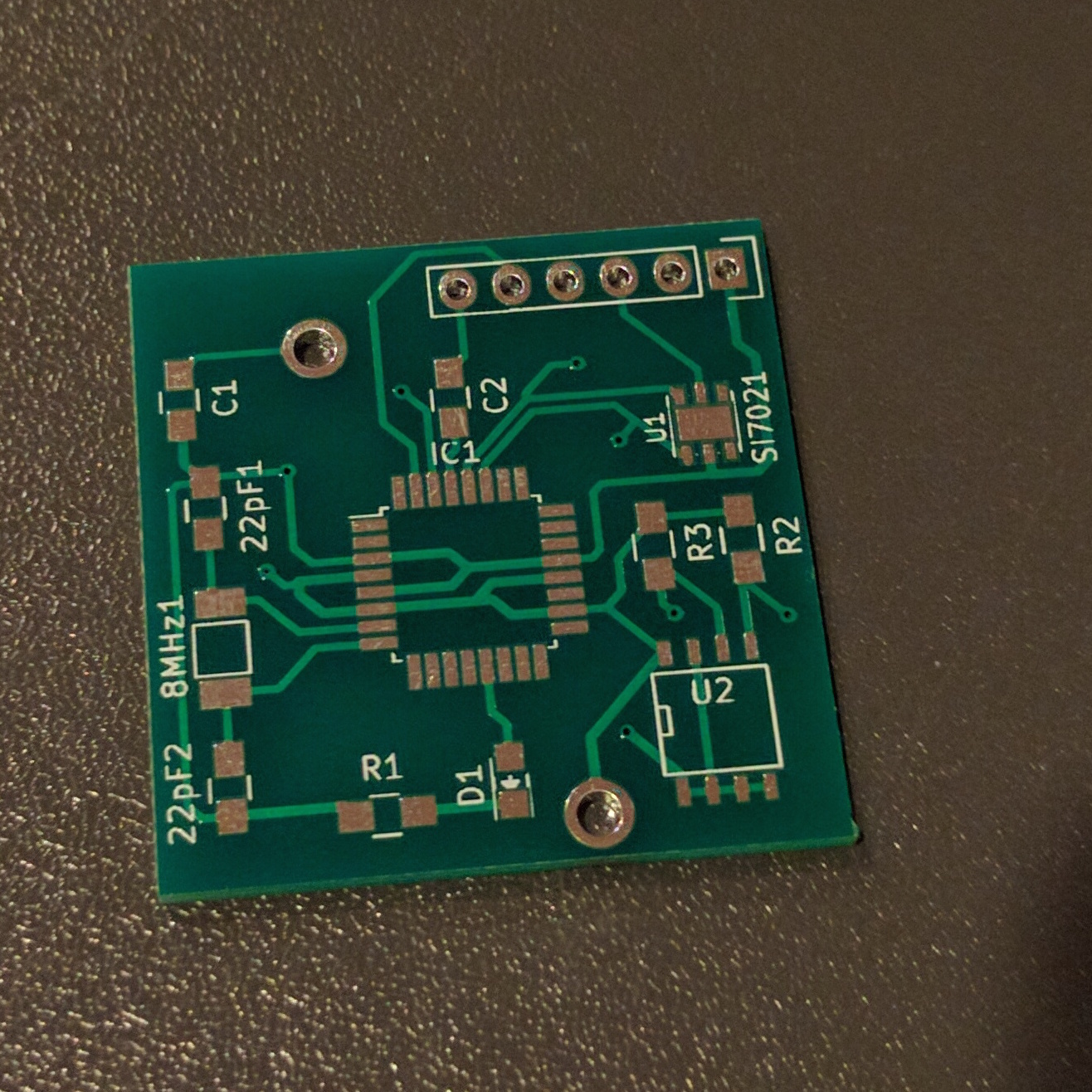
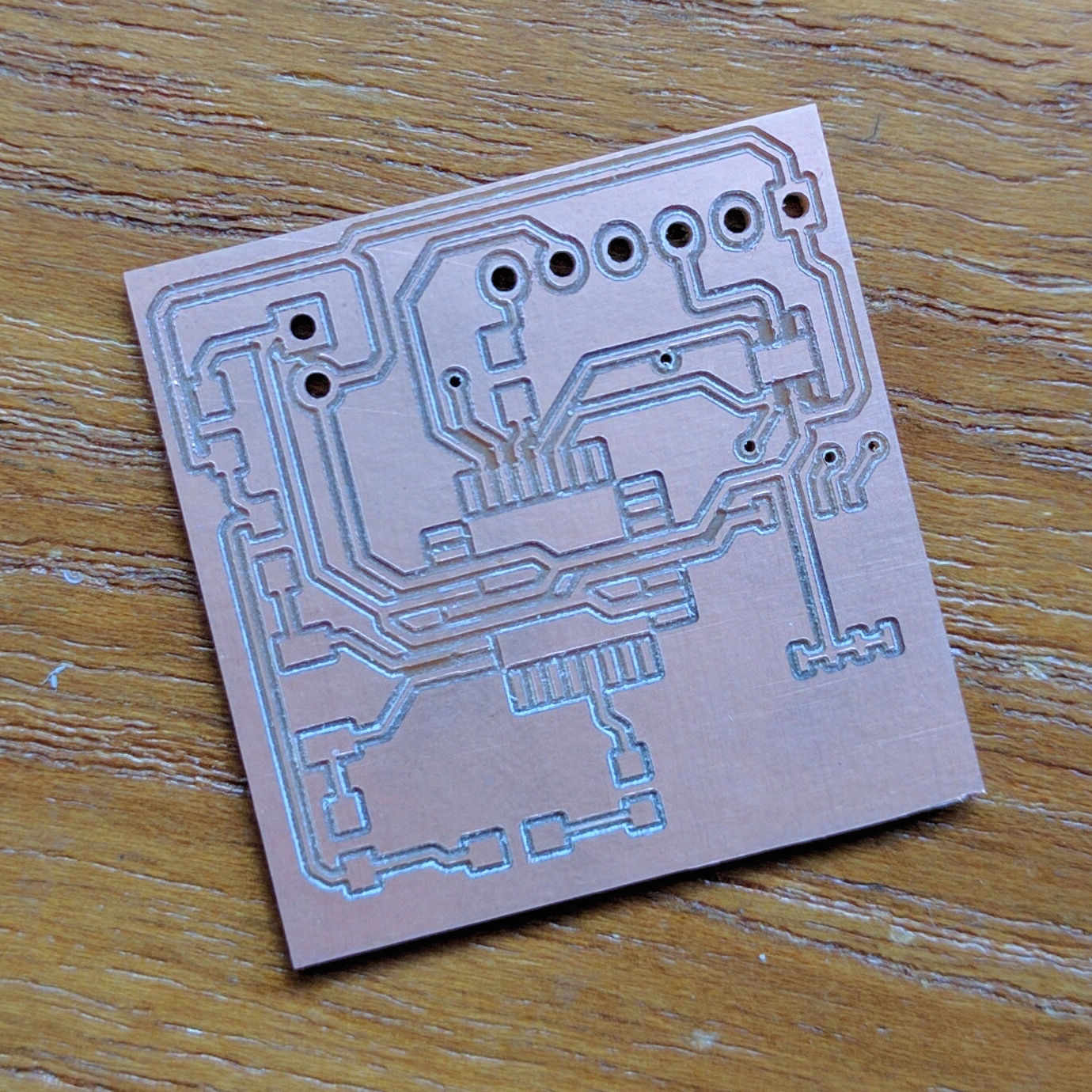
Getting professionally done prototype boards resolved some of the problems we were struggling with. With the boards we made ourselves, we had to squeeze out tiny portions of solder paste (a mixture of tin, silver and copper) that acts as a metallic glue for the components. Applying solder paste is a lot easier with the manufacturer’s board. Included in our order was a solder stencil, which you can put over the board and then drag solder paste over the open slots with a paint scraper, depositing a thin, even layer of solder on every pad. Here’s a photo of the stencil.
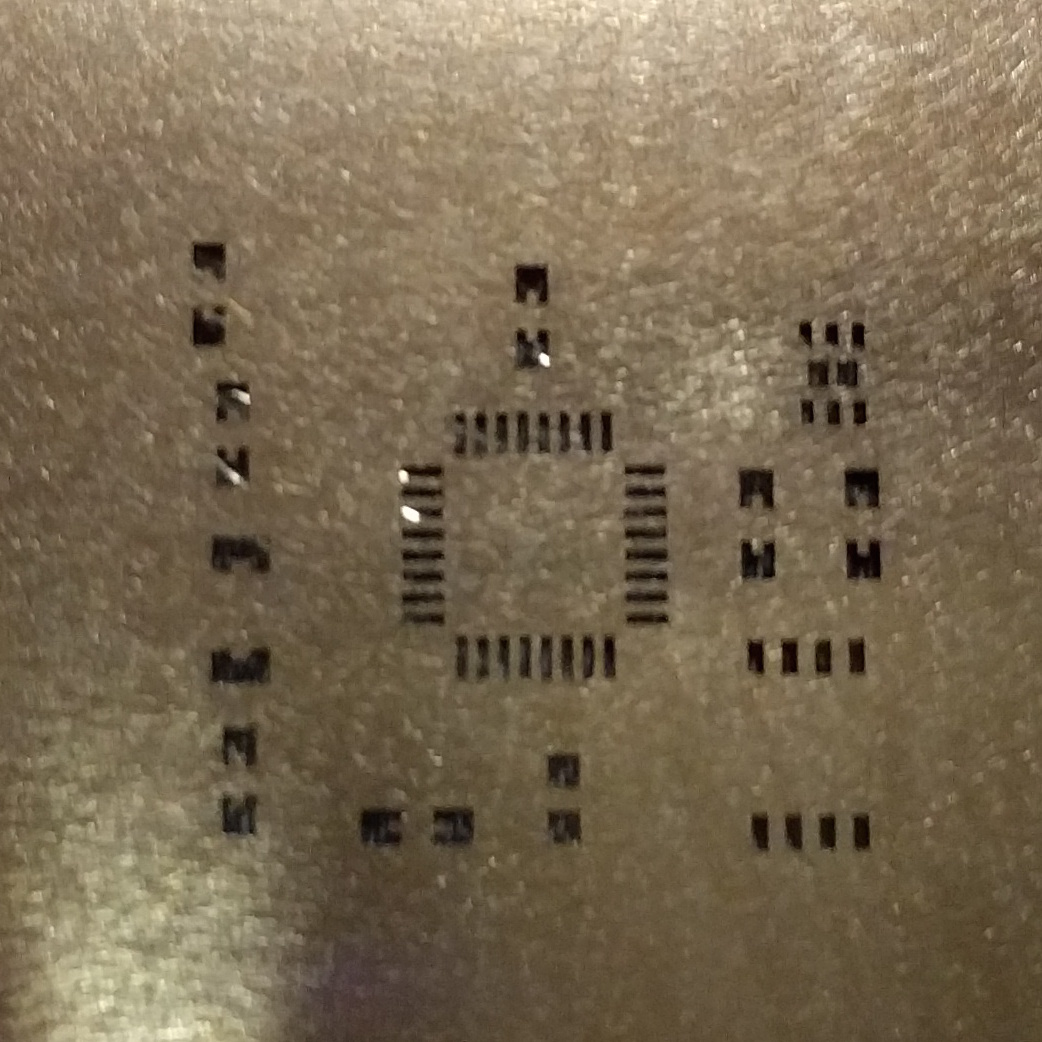

We also had issues reflowing the PCBs we made–the solder paste wasn’t melting and joining the component to the board. However, the board made by the manufacturer reflowed nearly perfectly.
The first time we assembled one of these boards, it booted up smoothly and ran the code logging temperature and humidity! Here’s a front and back shot of the board–the back is reserved entirely for the battery.
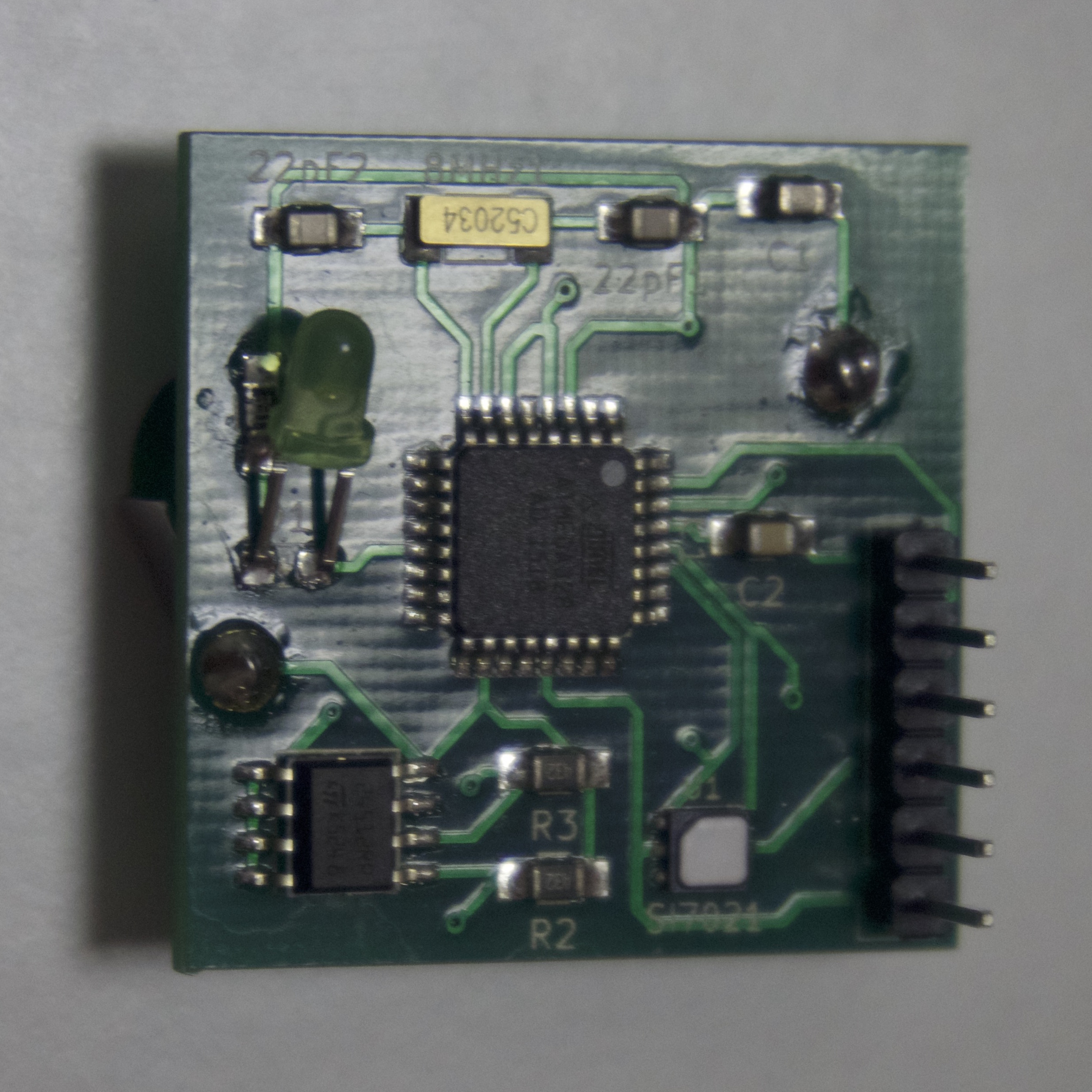
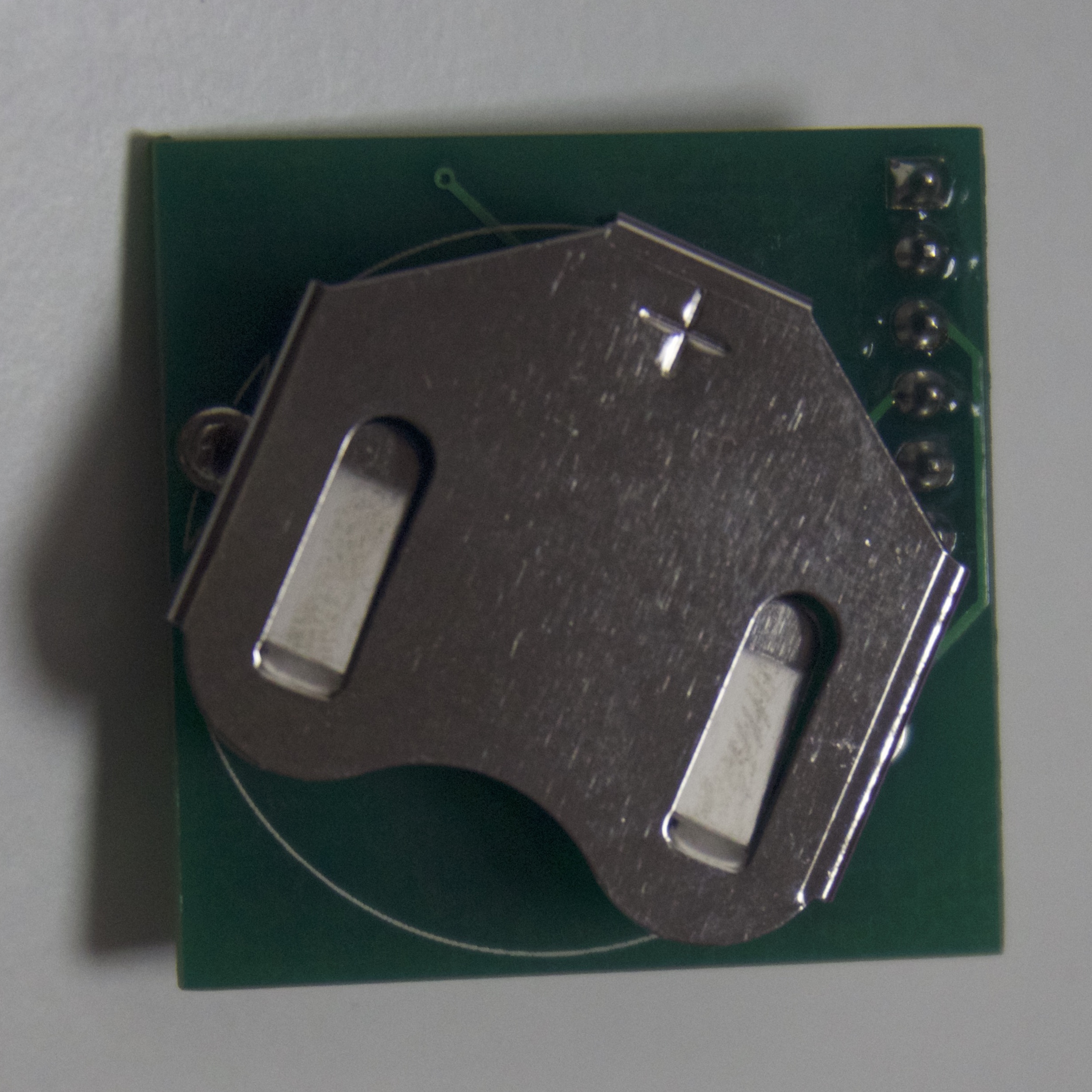
We ordered 10 boards and already have a number of things we want to improve for the next iteration. However, because this board is functional, we’ll be able to begin long-term testing that will give us insight into battery life and data quality. We’re also working now to create a case to fit the smaller board and will be completing some tests to determine how water resistant it can be.
We also have been looking into the potential environmental impacts of our sensors. Because the sensors will be placed into a nest with baby endangered reptiles, we need to make sure that nothing harmful leaches out into the sand, potentially causing damage to the hatchlings at the most critical and vulnerable point in their lifecycle. We’ve committed to making the sensors RoHS compliant–a protocol that restricts several of the hazardous substances commonly found in electronics components, including lead. The battery, of course, will contain hazardous chemicals, but we are working to design a case that minimizes the impact of battery corrosion.